Winter is a pretty good time to see waterfowl.
I know this sounds odd, but it’s true. We naturally associate warm weather with seeing more birds. But, when bodies of water are mostly frozen over, ducks tend to congregate in the few areas that still have open water. This may be below dams or in fast-moving creek areas. So it’s easy for weather conditions to gather them all in a few places for observation. This is great, though sometimes there are so many ducks it’s hard to tell one species from another without a close look. What a problem to have!
Here’s a selection of the more common waterfowl that I’ve seen in recent winters.
You garden-variety Canada Geese are usually plentiful. Keep an eye out for small ones (a subspieces) and even hybrids with different marks and patterns, that’ll make them more interesting! One of these days I’ll have to do a post on this species.
The most common duck in central Ohio is also out in force- the Mallard. The males and females look quite different, which is not uncommon among ducks. This is technically known as sexual dimorphism, which is often the result of a male looking real spiffy to attract a female.
At first glance, these ducks look like female Mallards. However- their body feathers are dark brown, and their beaks and legs are yellowish, compared to the female Mallard, who sports a bright orange beak and legs. These are American Black Ducks, another fairly common winter duck.
Now this is a handsome gentleman- a male Redhead, appropriately named. His orange eye is striking when you get an up-close look at him.
Here’s a group of male Ring-Necked Ducks. I think of them as ‘Ring-Billed Ducks’ because that’s where the visible ring is, but somebody else named them. so there you go! Black and white feathers, a steel blue beak, and orange eyes stand out on them.
Here’s a Scaup. He looks like a Ring-Necked Duck…without the ring. There are 2 species of Scaup, Greater Scaup and Lesser Scaup, and it can be a chore trying to tell them apart. One is slightly bigger than the other, and has a slightly different-shaped head. We’ll just call them Scaup for now!
This is an American Wigeon, which has a striking white and green head pattern along with a buff body. Look for that white stripe on the forehead.
Here is a pair of Ruddy Ducks– they have prominent beaks and short stubby tails. The male has white cheeks.
Here is a raft of American Coot. These waterfowl resemble a hybrid between ducks and rails- they have lobed toes on very large feet instead of webbed duck-feet. Their bills are bright white and oddly-shaped (compared to the typical duck bill, that is).
This is a pair of Hooded Mergansers, one of my favorite winter ducks. The male has this almost-inflatable head that he can expand and contract, while the female prefers an afro hairdo. That’s tons of character! As you can see, the males and females look so different that it is easy for the beginning birder to think that they are separate species.
Here are a couple Red-Breasted Mergansers grooming on the open water. They are brightly colored.
Last but not least- to round out the Ohio Mergansers is this Common Merganser I saw a couple of days ago.
It’s easy to look out at a crowd of waterfowl and say, ‘that’s a lot of ducks’. Give that crowd a closer look next time- you may be surprised at the differences you notice!


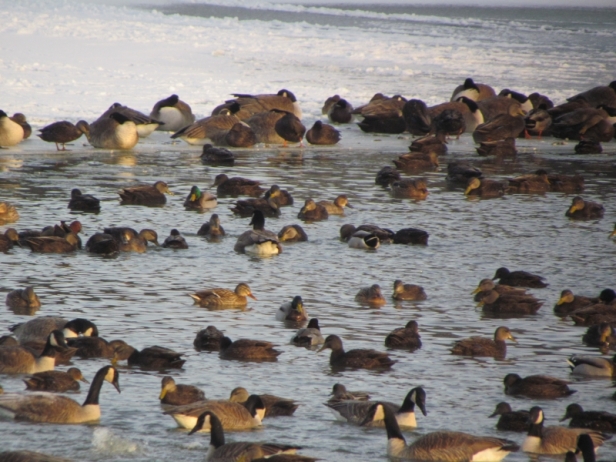
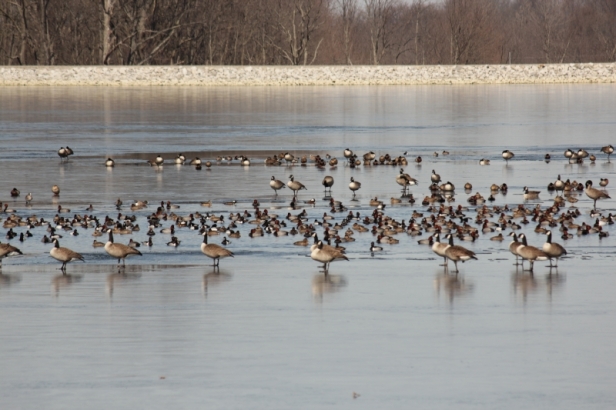
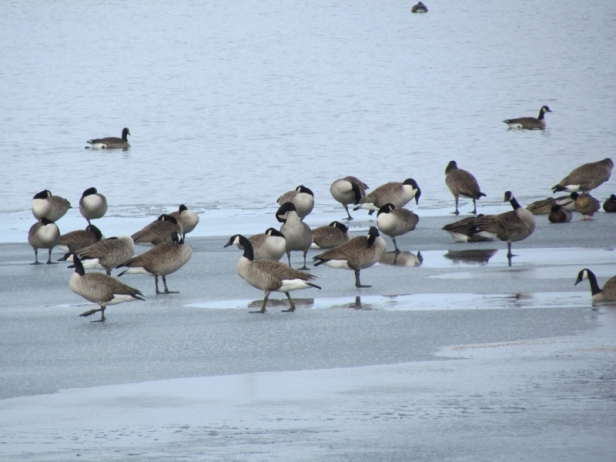
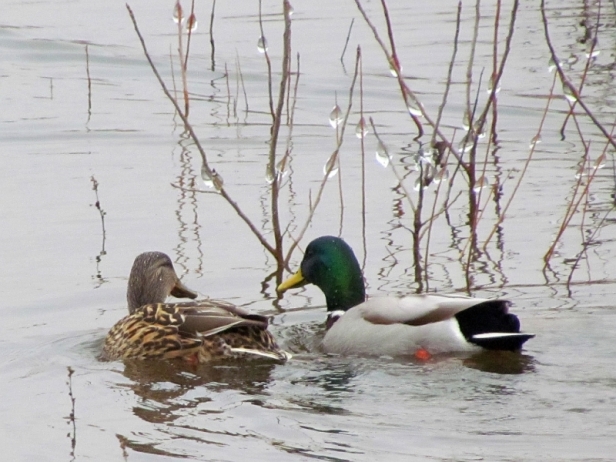
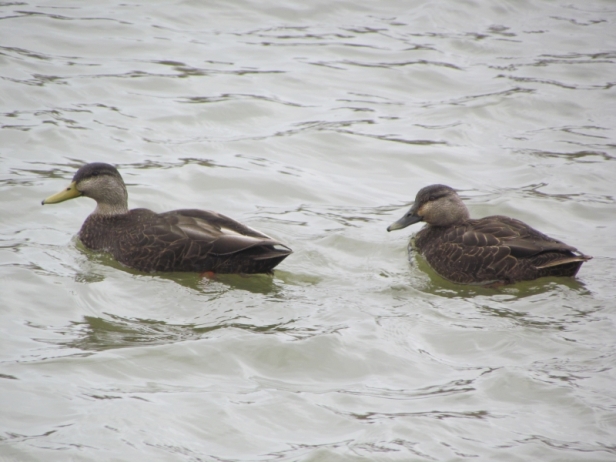
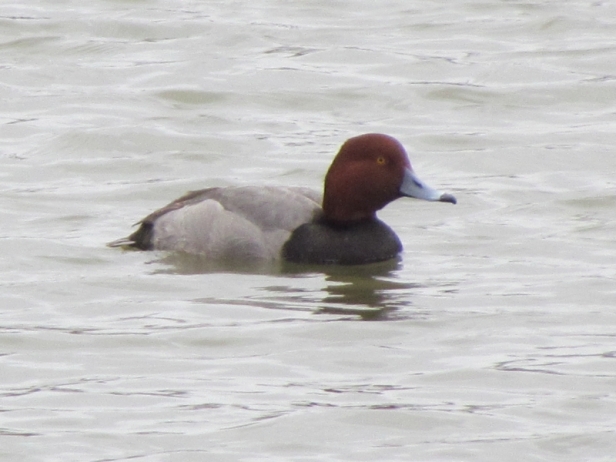
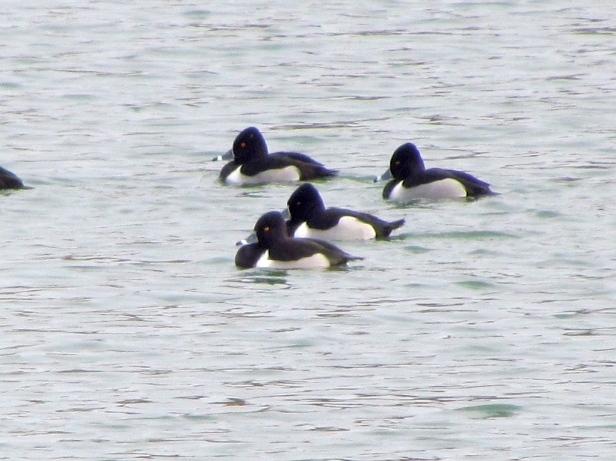
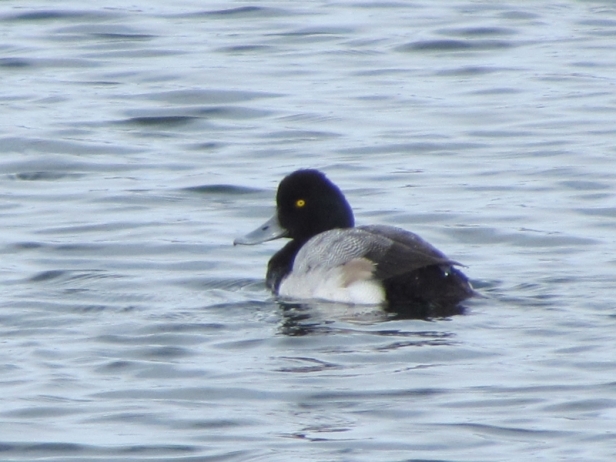
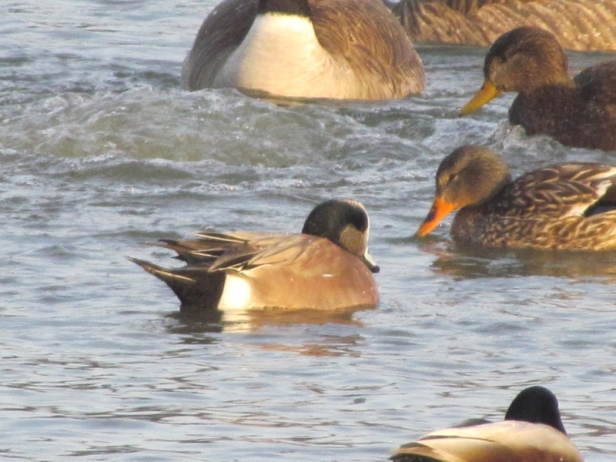
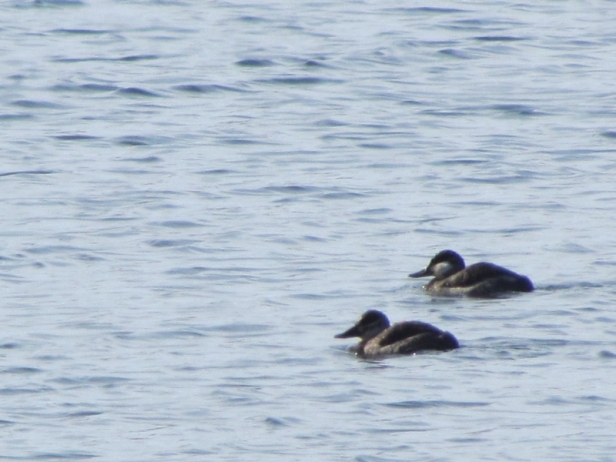
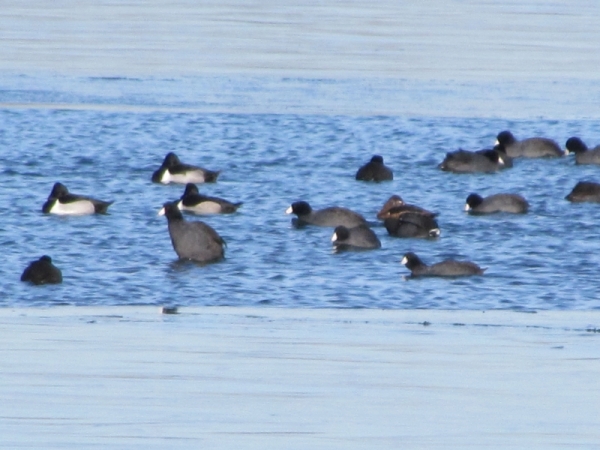
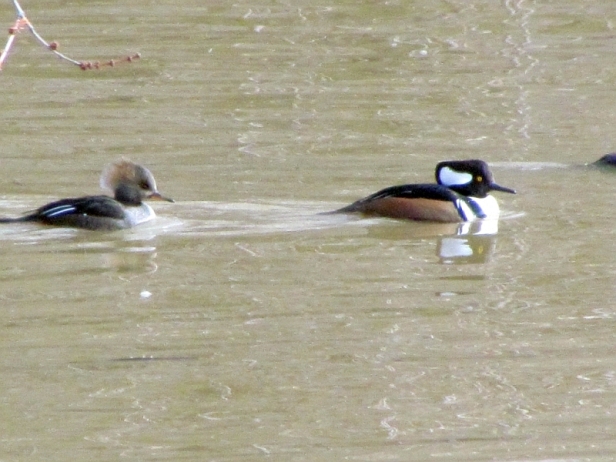
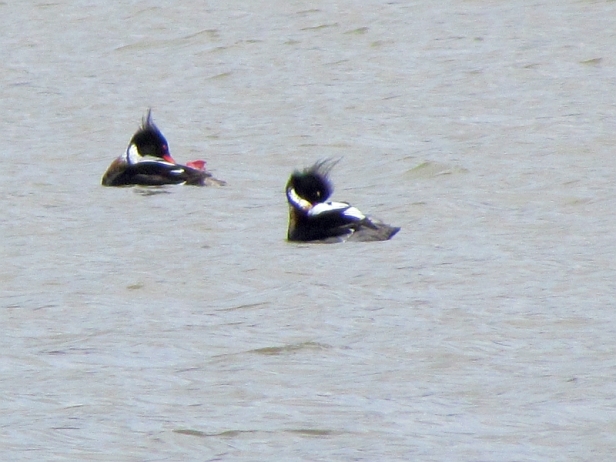
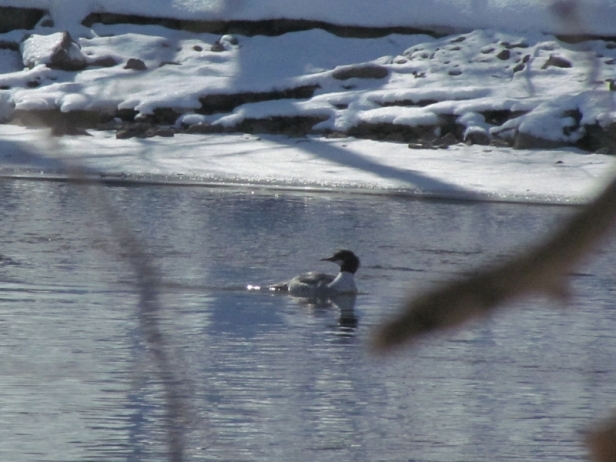
A very informative post, and well illustrated with very good photos!
Thanks- I have a hard time getting good closeup waterfowl photos because I lack a powerful telephoto lens (the closeup shots seen in this post are about all that I have). I like taking landscape shots as well as closeups, and I don’t think carrying a huge lens on hikes works out very well for me. So I tend to be fine with medium-length lenses, which gets me more shots of perching birds than shorebirds, waterfowl etc.
That was a lot of ducks but well differentiated. Thank you.
Thank you, Tootlepedal!
Interesting and informative post with lots of good images.
Many thanks, Pat!
It looks like a great party to “fowl” watch … everyone in their unique plumage.
Don’t forget a pair of binoculars, Bearyweather! 🙂
Love the variety! And the Redhead is one handsome dude!
He posed for a photo quite nicely, Inger! 😉
Hi Seasons, Great photographs of all those ducks and geese. I have never seen a Red-breasted Merganser before. By the way, I happily saw a lone pair of Hooded Mergansers out on a rainfall retention vernal pool or basin here in my development today. Sad for the ducks, no fish or much of anything else for them to dine on available – maybe an insect or two. Have an excellent rest of the week!
Thanks, Wildlifewatcher- Hooded Mergansers just look so interesting!
A wonderful post, and I love your photos! A large flock of pink-footed geese was flying over the house just as I was typing this!
Wow, that’s great timing, Jo! 😀
Thanks for the help identifying these waterfowl. I was surprised to find a pair of Northern Shovelers mingling with the other ducks at our local park not too long ago.